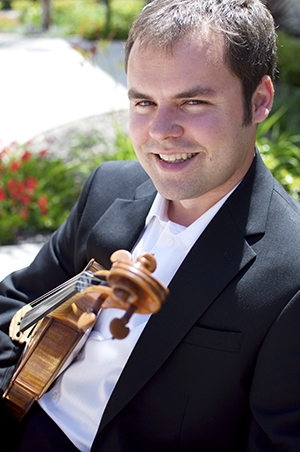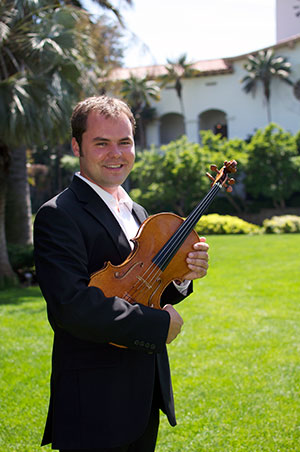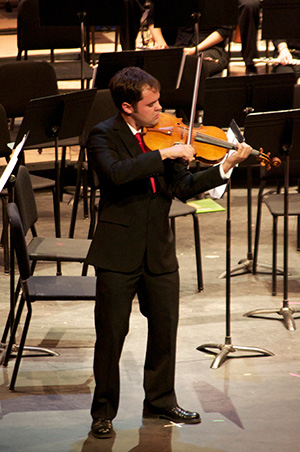Program Notes
My program notes have been published for concerts at Carnegie Hall, the Yale School of Music, the Norfolk Chamber Festival, the Manchester Summer Chamber Music Festival, and the Longy School of Music. They have been featured in programs performed by the Guarneri String Quartet, the Toyko String Quartet, Helen Callus, the Yale Philharmonia Orchestra, and the Concordia Chamber Players, among many others. Here are a few samples of published program notes on various works:
Vaughn Williams (1872-1958): Fantasia on a Theme of Thomas Tallis
Perhaps no work more aptly summed up Ralph Vaughn Williams’ personal credo with regard to a composer’s role in society than this utterly unique, hauntingly beautiful rhapsody. In plumbing the annals of English musical history, Vaughn Williams sought to connect with the rich communal lineage of English folk music and in particular the work of Sixteenth Century sacred composers. As the basis for his work, Vaughn Williams selected Thomas Tallis’ Why Fumeth in Fight, the third of nine psalm tunes from 1567.
In addition to its unique source material, the Fantasia was written in 1910 after the composer spent three months in Paris studying with Ravel, with the specific intention of improving his orchestration technique. With the Fantasia, it seems evident the work with Ravel paid dividends, as its unusual but effective orchestration calls for a large string orchestra, a smaller chamber ensemble, and a string quartet. The roles are distributed strategically, and when the antiphonal contrasts of immensity and intimacy combine with the Aeolian harmonies of the theme, an ethereal power one rarely encounters in the concert hall results. The Fantasia has been likened by writers such as Paul Serotsky to entering a cathedral: “On entering, you sense only the immense space, but as you tread inwards, you gradually become aware of the columns and arches defining that space, and the pews containing the congregational community. Having advanced all the way down the nave to stand before the altar…you turn around and are engulfed by the vastness of the whole, now magnified by your awareness of its parts…These buildings span the ages, connecting us to our mysterious forebears.” In both temporal continuity through the ages and in structural integrity both epic and personal, Vaughan Williams successfully crafted the musical equivalent of an ancient cathedral, reverberating across the centuries with reverence and resonance.
George Rochberg: String Quartet No. 3
Premiere: May 15, 1972 by the Concord String Quartet
George Rochberg once described his approach to composition as being a constant desire to achieve, “the most potent and effective way to translate my musical energy into the clearest and most direct patterns of feeling and thought.” This credo also illuminates Rochberg’s development as a composer.
Born in 1918 in Paterson, New Jersey to Ukrainian Jewish immigrants, Rochberg studied composition at Mannes College and the Curtis Institute. After marrying in 1941, he was drafted into the army. As a second lieutenant in the infantry (90th division) he saw active duty in Europe during World War II, where he suffered a serious wound during the Normandy invasion for which he was awarded a Purple Heart. Afterward, he returned to composition, the impact of war and its destruction furthering his determination to become a creator of artistic beauty and significance.
In the postwar musical climate, so-called “progressive” composition was largely being pulled in the direction of “serialism” (applying the principles of Schoenberg’s twelve-tone system to determine pitch, rhythm, dynamics and all other aspects of composition). For many avant-garde artists, serialism was the undeniable way forward, out of the still-smoldering remnants of Romantic excess toward the progress of intellectual modernity. Rochberg, like many of his peers, became convinced of serialism’s approach and its viability. By middle age, Rochberg had achieved impressive success as a thoroughly modern “serial” artist: winning awards, receiving high-profile commissions and premieres, and joining the faculties of Curtis and the University of Pennsylvania.
In 1961, the Rochbergs’ son Paul became ill with a brain tumor. He died three years later only 20 years old, and the agony of the loss sent the family into a deep state of grief. Out of this unbearable turn of events, Rochberg struggled compositionally in unforeseen ways, finding himself unable to convey the depth or profundity of his emotions through the serialist approach. He later wrote that, “the over-intense manner of serialism and its tendency to inhibit physical pulse and rhythm led me to question a style which made it virtually impossible to express serenity, tranquility, grace, wit, energy.” The challenge of finding a more appropriate musical vernacular for Rochberg’s feelings and thoughts occupied him heavily over the next decade. It was in his Third String Quartet, written for the Concord Quartet on commission from the Naumburg foundation in 1971, that the fruits of this arduous process began to flourish.
The Third String Quartet was in a decidedly new vein from Rochberg’s previous compositions, and indeed sounded like nothing being written at the time amongst serious composers. Gone is the serialism of his earlier work. Instead, the composition is a peculiar mixture of atonality presented side-by-side with traditional nineteenth-century tonality. It was this unabashed use of tonality that really got tongues wagging: such a thing was so far removed from contemporary compositional practice that many of Rochberg’s colleagues – staunch academic serialists – thought he had lost it, replacing his formerly “progressive” music with trite nostalgia. However, lost in the furor over the tonal passages was a more significant component: the radical rejection of, as Michael Linton describes, “the whole philosophical foundation of the postwar avant-garde.”
As a proudly individualistic artist, Rochberg believed fervently in the noble and lofty ideal of art lifting humanity to exaltation. He concluded that his personal philosophy clashed iwth the serial approach, and ultimately with any sense of stylistic uniformity. “Past” musical styles continued to live for him, contemporary styles were free to intermingle with them. Many refer – somewhat simplistically – to the style Rochberg initiated in the Third Quartet as, “Neo-Romantic.” He described it as, “an effort to rediscover the larger and more sweeping gestures of the past, to reconcile my love for that past and its traditions with my relation to the present and its often destructive pressures.” Undeniably, it is an individualized language contemporary to the late-twentieth century that both carries the burden of grief and points towards a greater transcendence.
Structurally, the Third Quartet is divided into five movements (comprising three large sections) in the form of a large palindrome. The first section is made up of a fantasia-like introductory movement containing violent atonal ideas and tranquil tonal gestures, directly juxtaposed to heighten their contrasting qualities. This continues without pause into the first of two Marches, characterized by an earthy dissonance reminiscent of Bartok. The middle movement is a classically structured theme-and-variations movement, unambiguously tonal and according to Rochberg, embracing, “the harmonic/polyphonic palette of the Classical and Romantic traditions.” A second March succeeds the slow movement and begins the last section, sharing material and character with the previous March, though with the music developing differently. This leads directly into the Finale, entitled “Scherzos and Serenades,” and also featuring a palindrome structure: A highly chromatic and rhythmic Scherzo is followed with a tonal and elegant Serenade; a central Scherzo erupts in an energetic fugato, after which the Serenade and initial Scherzo material return in an extended form, leading through to a vigorous conclusion.
Tchaikovsky: Violin Concerto and Symphony No. 4
When examining Tchaikovsky’s life and oeuvre, music historians and aficionados are typically quick to point out the tendency toward unsubtle melodrama and heightened emotional turbulence in much of his work, with a troubled and stormy personal life (complete with a disastrous marriage and closeted homosexuality) providing the psychoanalytic basis for such conclusions. In short, the great composer was a quintessential Romantic spirit in the way he lived, and that came out through his compositional pen. While this standard perception has some merit to it, it presents an incomplete picture of both the man and his music.
The side less often explored (partially because it admittedly makes for a less dramatic legend) is the more elegant and refined Tchaikovsky: the man who adored Mozart in an age when that composer was not fully appreciated, the man who worked rigorously on the formal and technical aspects of his craft (unlike his contemporary colleagues Mussorgsky, Borodin and Balakirev, who had little or no formal training), the man who sat down consistently each morning to compose and once remarked, “The muse has learned to be on time.” This side of the composer’s nature was as important to his work as was his Romantic sensibility. In two of his most famous and beloved orchestral works, the Violin Concerto and the Fourth Symphony, these two sides of Tchaikovsky’s musical identity shine through.
Both works came from the same period of 1877-78, during an extraordinary time in the composer’s life. For proper context, the story must begin a few years prior in 1875 with an unlikely source. Yosif Kotek (1855-1885), a violinist of supposedly outstanding talent, had just graduated from the Moscow Conservatory, where he had studied with Tchaikovsky and developed a friendship as well. Upon Kotek’s graduation, through the recommendation of Nikolai Rubinstein, the violinist was hired to perform new music in the home of Nadezhda von Meck, a wealthy, eccentric widow and ardent music lover. It was through Kotek that Tchiakovsky was brought to the attention of Mme von Meck, who would become the composer’s patron and significant correspondent throughout the remainder of his life.
Without his relationship with these two individuals, there is the distinct possibility that Tchaikovsky would not have survived the disastrous marriage he began in July 1877 (during which time he was at work on the Fourth Symphony). That fall saw Tchaikovsky flee to Italy and Kotek move to Berlin to study with Joseph Joachim. The following spring the two met up in the Swiss town of Clarens, where Tchiakovsky began work on his Violin Concerto as a gesture of friendship.
The epic first movement of the Concerto was completed in just two weeks, and by then the always prolific composer had already substituted the haunting Cazonetta second movement for his original (The original Andante, subsequently titled Meditation, became the first of his three pieces for violin and piano, Op. 42). The initial plan was to have Kotek premiere the work, but although Tchaikovsky felt he had sufficiently mastered it, the violinist had reservations about his readiness. It was only the beginning of the work’s rocky origins.
After Kotek withdrew, the Concerto was offered to the brilliant Hungarian violinist and pedagogue Leopold Auer- most famous in the annals of history for teaching Heifetz and Milstein, among many other legendary players. Auer, upon looking over the part, famously deemed the concerto “unplayable” and refused to perform it. Tchiakovsky had already been down this road once before, with his now-equally popular First Piano Concerto, which Nikolai Rubinstein initially deemed impossible (though later Rubinstein, like Auer with the Violin Concerto, became a great champion of the work).
With Auer withdrawing his name, the honor of premiering the Concerto fell to Adolf Brodsky, who happily gave the work’s premiere in December 1880 in Vienna. The location is quite significant, as it was the only Tchaikovsky work to be given a world premiere by the famous Vienna Philharmonic, under the baton of Hans Richter.
Despite these prestigious circumstances, the Concerto, now internationally renowned, was received apathetically. The legendary Viennese music critic Eduard Hanslick, who generally admired Tchaikovsky’s work, used a phrase in his review often translated as “music that stinks in the ear.” Before long, this harsh initial judgment was replaced with calls of admiration, led by none other than Auer, who after his initial reluctance to the work became one of its greatest champions, proceeding to teach the Concerto to two generations of violinists and helping to solidify its standing in the repertoire.
Despite its grandiose scope and scale (particularly in the first movement), the Concerto is a testament to the refined and elegant side of Tchaikovsky’s sensibility. The orchestral writing is every bit as inventive as the brilliant solo passages, despite being for relatively small and traditional forces. Many of the wind solos in particular echo the style of the composer’s ballet writing (Swan Lake was premiered a year before the Concerto), and the entire work unfolds with an unforced lyricism and, particularly in the last movement, a Mendelssohn-like sparkle.
The Fourth Symphony, Op. 36, came out of this same period of Tchaikovsky’s life, though perhaps served as a more accurate conveyer of the emotional strife he was experiencing. It was early 1877 when Tchaikovsky began to receive regular allowance from Von Meck, and at this point he was in his creative prime, having just completed the opera Eugene Onegin, the ballet Swan Lake, and the First Piano Concerto, with the Violin Concerto ready to germinate. More than just her material support, Von Meck carried on a prolific correspondence with Tchaikovsky, which led to profound insight into the composer’s psyche.
With regards to the Fourth Symphony, this manifested itself in the famous question Von Meck asked regarding the work’s programmatic aspect. Tchaikovsky responded by referring to the opening brass fanfare as ‘the kernel of the whole symphony’ representing ‘Fate, the force of destiny, which ever prevents our pursuit of happiness from reaching its goal…It is invincible, inescapable. One can only resign oneself and lament fruitlessly.’
That resulting lamentation is heard in the angst-filled main theme played by the violins and cellos, after the fanfare fades away. The agitated material, in a heavily syncopated 9/8 meter, has the unstable quality typically associated with a symphonic development section. In the secondary material, the tempo slows, and the clarinet and flutes sing a more lilting and optimistic theme. This material provides an easy respite, but it is no match for the power of the Fate fanfare, which interrupts the increasingly impassioned dreaminess like a cold bucket of water. Throughout the development, the lamenting and Fate references become increasingly desperate, and the recapitulation pits the idealistic yearning music against the pain of reality. An incredibly potent coda hammers away the sense that, as Tchaikovsky wrote ‘All life is the ceaseless alternation of bitter reality with evanescent visions and dreams of happiness.’
The scene for the second movement was conveyed in Tchaikovsky’s letter as referring to, ‘that melancholy feeling that arises in the evening as you sit alone, worn out from your labors.’ Contrasting themes describe the memories of ‘blissful moments when our young blood seethed and life was good.’ As in the first movement, all happiness is either in the past or in a dream, never in the present reality.
The popular and oft-heard Scherzo divides itself into three distinct and easily identifiable sections. It opens with a dancing pizzicato section in the strings, followed by a folk-like ‘trio’ section in the winds, and finally a distant military march in the brass. These three themes, separated clearly into orchestral families, are shuffled around and spliced with each other in clever ways, demonstrating Tchaikovsky’s Mozart-inspired wit.
The shocking force of the Finale’s overwhelming unison theme prevents any lingering pleasure from the Scherzo to remain in the air. Tchaikovsky described it as follows: ‘if you can find no impulse for joy within yourself, look at others. Go out among the people. See how well they know how to rejoice and give themselves up utterly to glad feelings. It is a picture of a popular holiday festivity.’
Though the Finale is often interpreted as, much like Beethoven’s Fifth, the overcoming of Fate by triumphal joy, a dark current undermines the effect. The call by Tchaikovsky to ‘Go out among the people’ is telling, as it echoes the revolutionary words of the so-called Populists, who, despite widespread indifference at the time, were coming into prominence in the 1870s.
Tchaikovsky, like his patroness, was a proud Tsarist, and his call to ‘go out among the people’ could therefore be taken ironically, as being not as fulfilling as promised. Certainly the Finale builds to increasingly chaotic, almost panicked affirmation, with the Fate call sternly interrupting the hysteria. Not unlike Shostakovitch’s Fifth Symphony, another popular Russian symphony written some sixty-odd years later under the shadow of Stalinism, the closing of the Symphony can either be interpreted as a straightforward triumph or as a forced but ultimately unsatisfying attempt at conclusiveness on the bleak preceding material.



